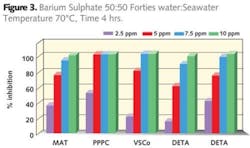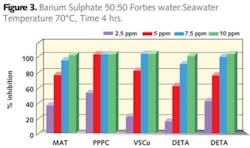Information Management Helps Streamline Reporting, Operations
The City of Gastonia, North Carolina, Water Supply and Treatment facility is using the Hach Water Information Management Solution (WIMS™) to help manage the data and streamline reporting. The WIMS is helping the drinking water utility with data management, water quality monitoring and process optimization.
The City of Gastonia Water Supply and Treatment facility is a surface water treatment plant that operates in Gastonia, NC, but supplies water to five other North Carolina towns and one in South Carolina. The facility supplies water to a population of roughly 80,000, but about 60 percent of its treated water is used by industries and businesses through 531 miles of water lines. The facility’s plant capacity is rated at 25.3 mgd.
To meet strict Environmental Protection Agency (EPA) regulations, the plant collects data every hour generating millions of pieces of data across its entire process. Since the facility also provides water across the border into South Carolina, it also must closely monitor all chlorine residuals and water quality in accordance to the agreements for both states.
The City of Gastonia drinking water treatment facility is using the Hach Water Information Management Solution (WIMS™) to help manage the data and streamline reporting.
Lisa Richardson, assistant division manager for the Water Supply & Treatment Division, Public Works & Utilities, is responsible for data management, water quality and optimization. In addition, she is responsible for providing plant and operational data for the division manager, city council and assistant city manager.
In the past, up to 65 percent of Richardson’s job was simple data entry and generating required reports. Over the course of a single month she is responsible for consolidating data, creating and filing more than 16 different reports for state and other regulatory agencies. Prior to implementing the new system, it would take her a week and a half to complete just the monthly state report.
Richardson now estimates she spends less than 10 percent of her time on data entry and could easily get all the reports for the entire month completed in a matter of a few hours. She estimates that WIMS is saving her nearly 400 task hours a year for reporting alone.
One particular report, the Area Wide Optimization Program (AWOP) Award, requires the facility to report turbidity for both settled and combined filter effluent. The report requires this data every day for a year. On paper, this would be a monumental undertaking. But, by using WIMS, Gastonia plant operators can simply print a report to check numbers then cut/paste that information directly into the report.
While managing operational parameters on her personalized dashboard, Richardson creates reports at the request of the Division Manager, Assistant City Manager, City Council, press groups and just about anyone else who has the authority to request information from the facility – even if the request comes in with little warning and a short deadline.
Using WIMS, she can meet those requests in a timely manner – sometimes while still on the phone, and provide all the information in formatted graphs which are easy to consume and use for non-technical audiences.
“This program probably has saved us 200-300 hours over the last month for doing our budget,” Richardson said.
Optimize Plant Operations
Use of the information management system has allowed operators to focus more time on plant optimization. Staff can also track key performance indicators, such as raw and finished water turbidity, chlorine residuals in the distribution system and pH.
One of the parameter alerts that Richardson has built into her WIMS dashboard is for turbidity. Regulations limit the amount of turbidity in the finished water and, more importantly, Richardson knows when turbidity starts to creep up, action needs to be taken.
When turbidity begins go to up, staff first inspect the coagulant dosage, Polyaluminum chloride (PAX), and can follow up with jar tests to identify the optimal range of chemical to reduce turbidity. WIMS allows Richardson to instantly see what they have been feeding historically. By being able to manipulate the PAX dosage, staff have saved almost two truckloads of PAX a year resulting in a $16,000 savings.
In 2009, the City of Gastonia earned an Environmental Stewardship award by demonstrating that it was reducing and saving environmental resources. The award came after the city streamlined its filter backwash process.
Rather than following a ‘written in stone’ standard operating procedure by backwashing for a specified amount of time, Richardson’s team monitored the turbidity of the water coming out of the backwash. They found by monitoring the turbidity they could shorten the backwash, saving treated water, energy and operator time while also lengthening the filter cycles. The team monitored their results for an entire year and presented their findings. In addition to meeting the requirements of environmental stewardship, the facility saved $15,000 by reducing the amount of treated water used for the backwash.
WW
More WaterWorld Current Issue Articles
More WaterWorld Archives Issue Articles

